Making your own all natural herbal salve is so easy! This salve is the perfect beginner herbal medicine recipe for a beginning herbalist. Use it on minor cuts, scrapes, bruises, bites, stings, rashes and dry skin. It has powerful healing benefits with all of the medicinal herbs it contains, and smells divine! Learn how to make an herbal salve using herbs and plants you can find in your own backyard or grow in your garden.
Homemade Herbal Salve Recipe
I’m so excited for this post as this is something that I’ve been wanting to do for a long while! If I had known how easy this is I would have done it years ago.
I’m going to show you how to make an herbal salve with herbs that you can forage or are most likely growing in your garden.
The best part about it is that you can use any number of herbs, it doesn’t have to be the exact ones that I show you here, as there are many that have powerful healing properties.
Choosing and Drying Herbs for Herbal Salve
Alrighty, lets get into the details of this salve making!
The first step in the process is to make an herbal oil infusion, which sounds a lot more complicated than it actually is. There are a few different ways to do this, but the first thing you need are herbs.
For this salve I used plantain leaves, comfrey leaves, yarrow leaves and flowers, lavender flowers, and lemon balm leaves.
There are many other medicinal plants and herbs that can be used, such as calendula, St. Johns wort, dandelion, and arnica to name a few.
I foraged the herbs for this salve, but you can also purchase high quality, organic dried herbs from Mountain Rose Herbs.
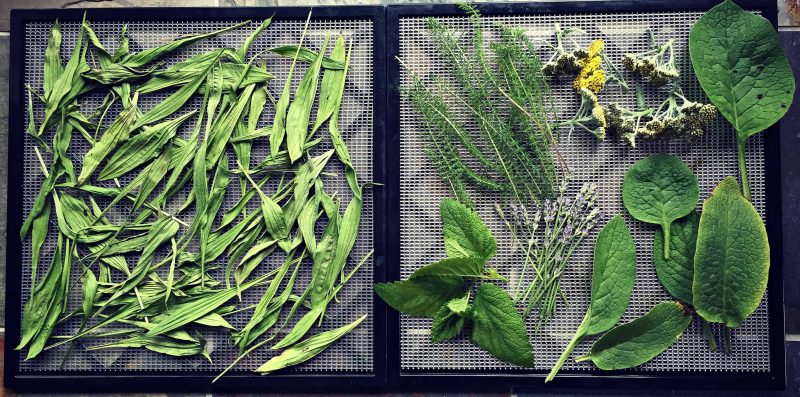
Want to save this post for later?
If you are using freshly foraged or homegrown herbs you will need to dry them first.
Hang them upside down for several weeks, use a drying screen, or if you need them in a hurry and you happen to have a food dehydrator (Excalibur is best), you can use that as well.
Since I was making yogurt in my dehydrator already, I decided to do double duty and dry my herbs at the same time.
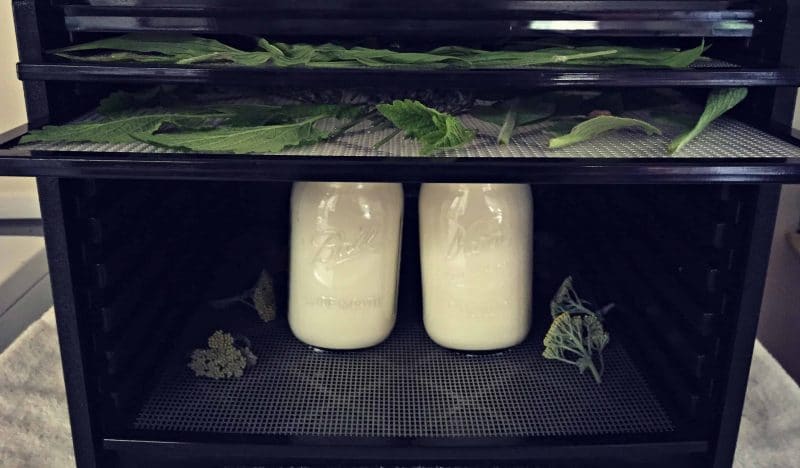
In general, it’s important to make sure that your herbs are completely dry before you make your oil infusion or else mold can form and it will go rancid.
There are a few herbs that are better infused fresh however, such as St. John’s wort.
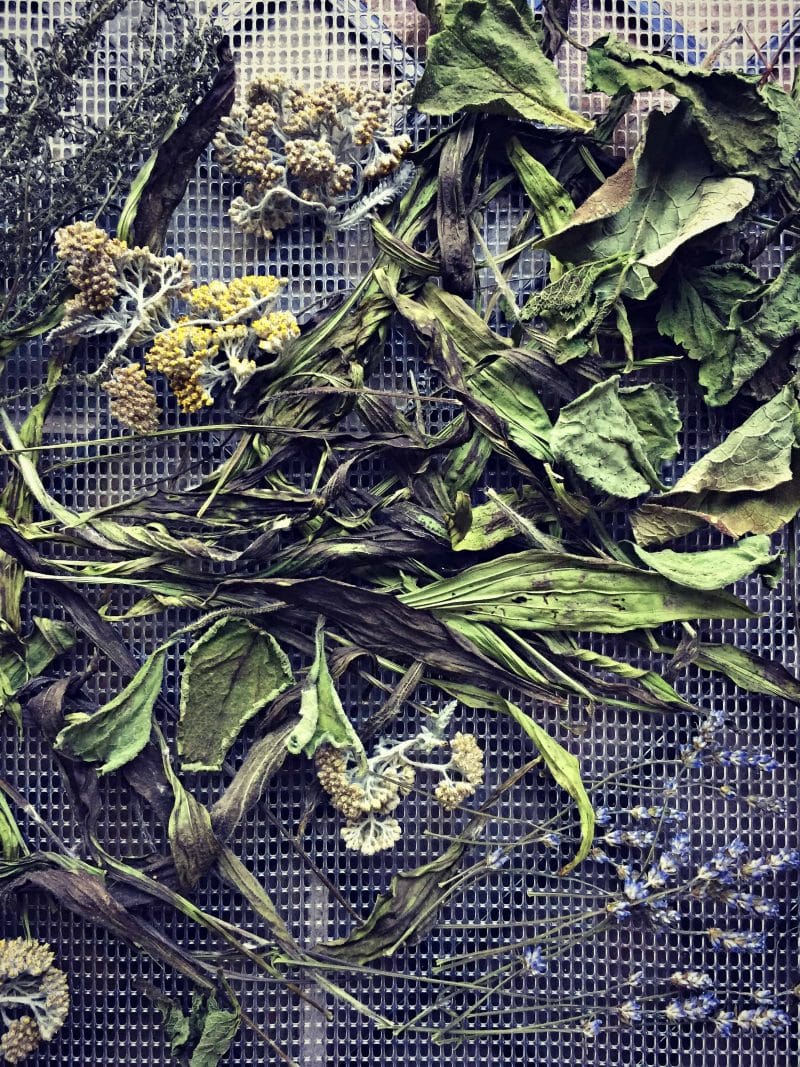
Make the Herb Infused Oil
Now it’s time to make your infused herbal oil. There are a few of ways to do this, the first is to simply put your dried herbs in oil and let it sit in a cool place out of direct sunlight for several weeks.
I will often gently heat my oils as they’re infusing in my dehydrator a few times to help the process along.
You can use several different types of oil for your infusion, but olive oil is the most common. I also like to use coconut oil.
If you need your infused oil sooner, or if you want to use coconut oil which is usually solid at room temperature, you can gently heat the herbs in the oil over a double boiler or in a slow cooker on low heat.
I was short on time and wanted to use some coconut oil, so I decided to go with this method. Plus, I recently acquired a slow cooker that came with a second mini slow cooker, and I discovered that this is the perfect use for it!
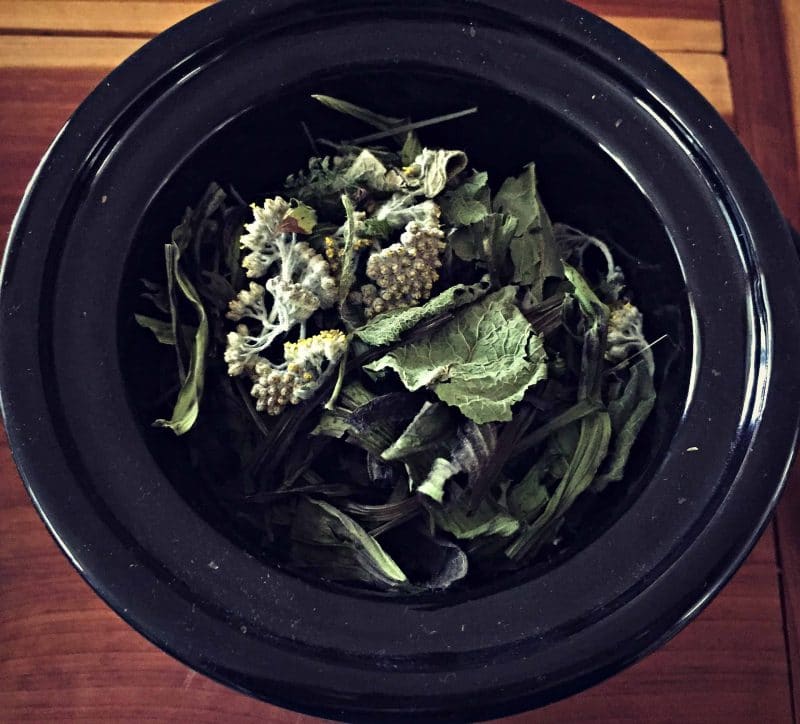
Crush up your dried herbs a bit and put them in your vessel, then cover with oil. I used a combination of olive and coconut oil, a total of approximately 1 ½ cups. The more oil you make, the more salve you can make.
Heat for several hours, making sure that it doesn’t get too hot and cook the herbs. I did this in the evening and turned off the heat before bed, letting the herbs continue to steep overnight.
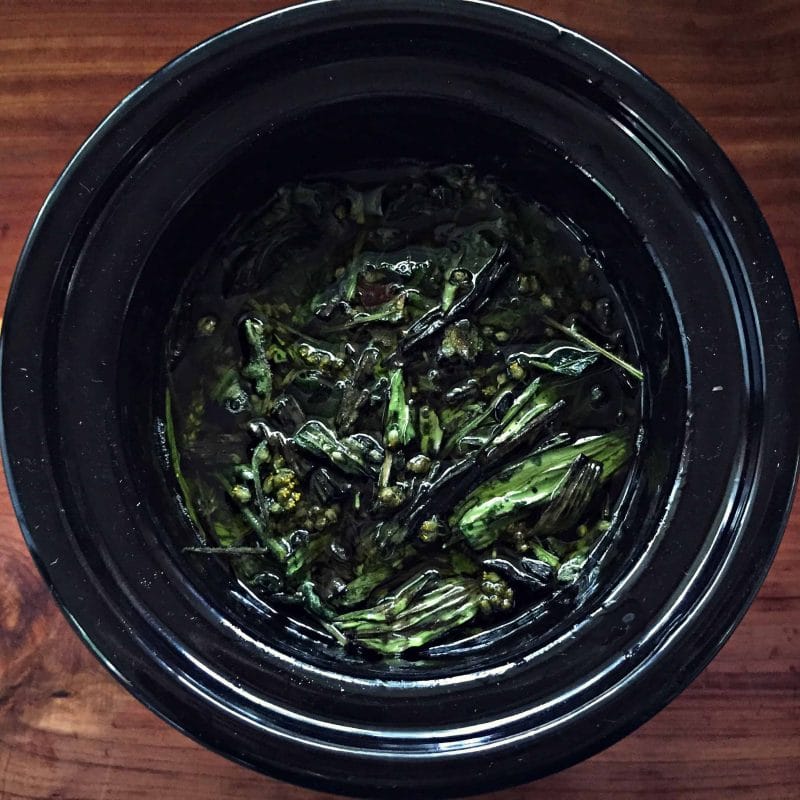
Make the Herbal Salve
The next morning I had a very fragrant herbal oil infusion! Strain it with a sieve and cheesecloth into a bowl that you will be able to use as a double boiler.
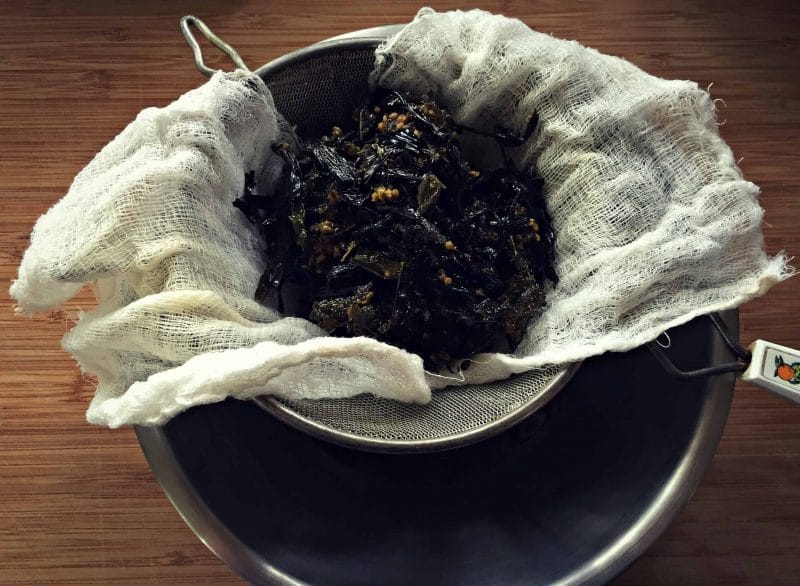
Use the cheesecloth and squeeze every last bit of oil into the bowl. Now that you have your herbal infusion, it’s time to gather the rest of the necessary ingredients.
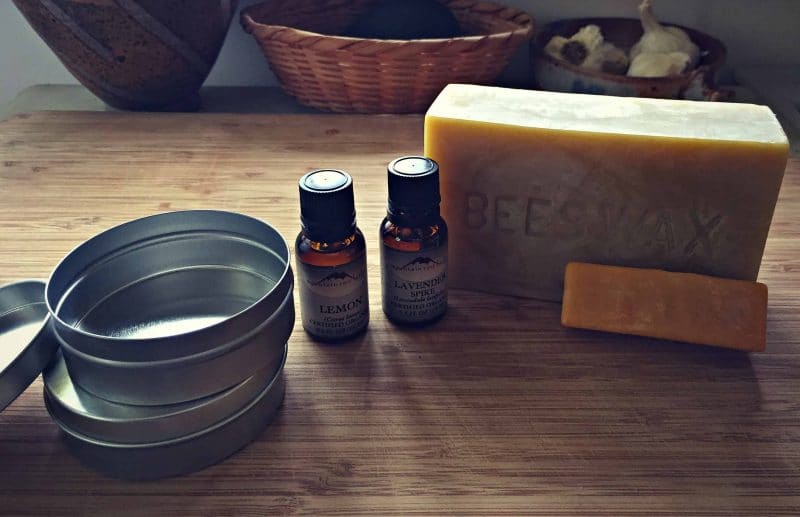
Beeswax (or carnauba wax for vegans), essential oils of your choice, and some sort of vessel to put your finished salve in (such as jars or tins) is all that you’ll need besides the infused oil.
I use about 1 ounce of beeswax (one small stick) per cup of infused oil, and lavender and lemon essential oils, to accentuate the lavender flowers and lemon balm in the salve.
Now everything comes together quite quickly. Put your bowl of herb infused oil onto a pot of boiling water, double boiler style. Cut your wax into chunks and add it to the warm oil.
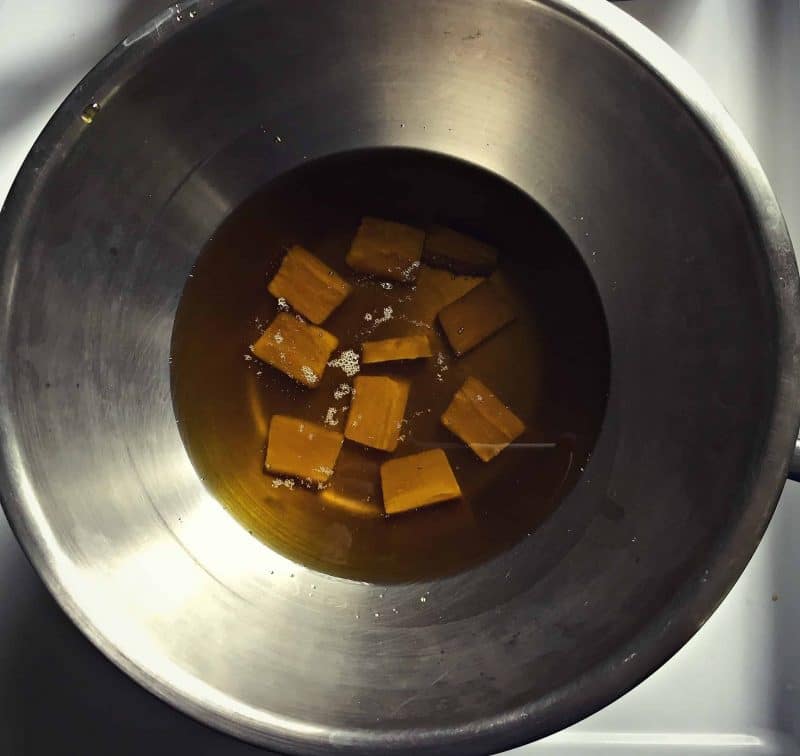
Once the oil heats up the wax should melt fairly quickly. When it’s completely melted, take the bowl off the heat (it’s probably hot!) and add drops of the essential oils. I did 12 drops of lavender and 6 drops of lemon.
Then carefully pour the salve mixture into the tins or jars.
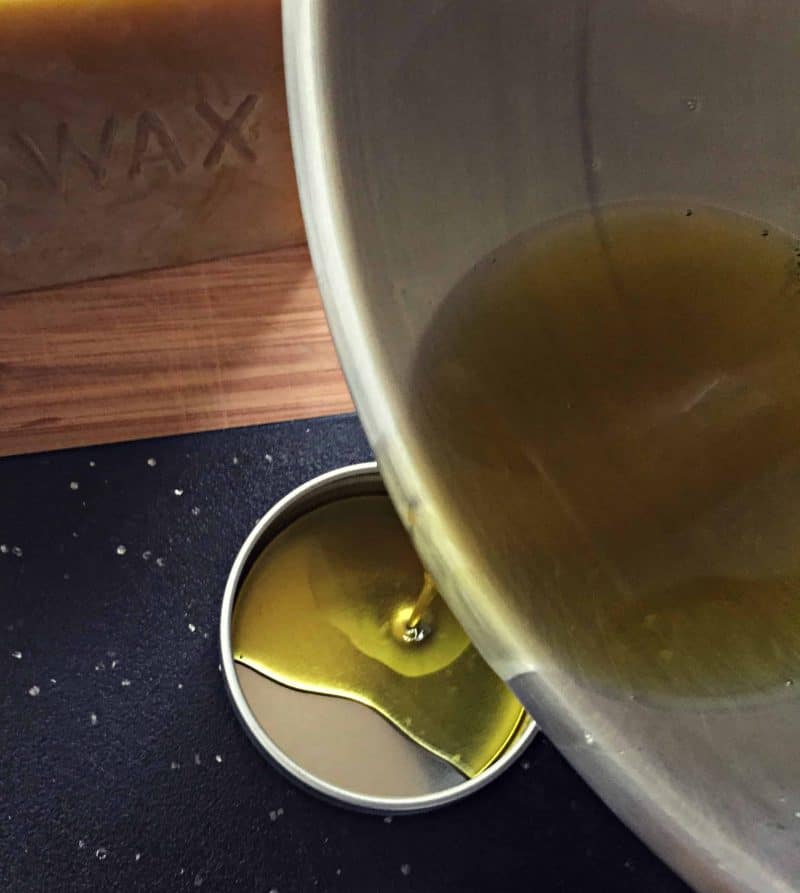
This batch that I made yielded two 4 ounce and two 2 ounce containers. I like to make various sizes so that I can stash them in different places such as my purse or the car.
Once the tins are full let them sit undisturbed for a few hours to solidify.
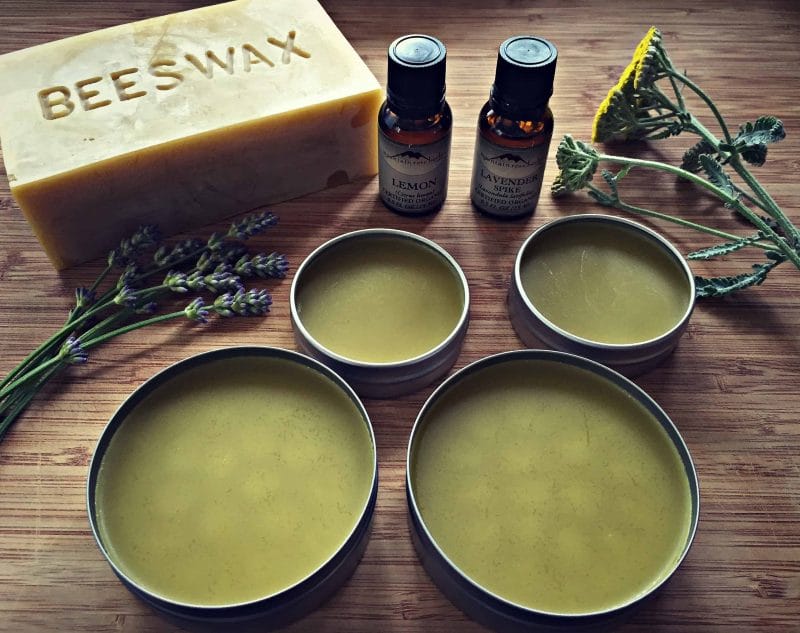
That’s all there is to it! It’s pretty amazing what we can make at home with just a few simple ingredients and a bit of time.
This herbal salve is good for minor cuts, scrapes, bruises, bites, stings, rashes and dry skin. I use it on my hands and feet all the time.
Not only does it have astounding healing powers with all of the medicinal herbs that it contains, but it smells absolutely divine!
You can also make this into a lip balm if you’d like, simply add more a bit more beeswax to help it hold up better on your lips.
Lip Balm Recipes
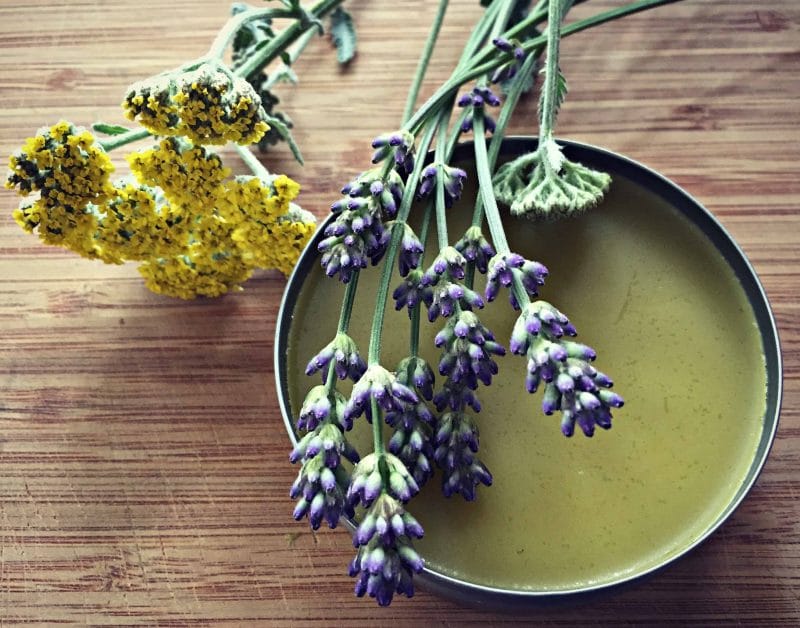
More Herbal Salve Recipes
- Dandelion Salve
- Yarrow Salve
- Plantain Salve
- Calendula Salve
- St. John’s wort Salve
- Bug Balm
- Comfrey Salve
- Manuka Honey Salve
- Diaper Rash Salve
- Pine Salve
Happy herbal salve making!
Herbal Salve
Ingredients
Herb Infused Oil
- 1 ½ cups carrier oil of choice olive, coconut, and/or sweet almond work well
- 1 cup dried herbs plantain, yarrow, comfrey, lavender, calendula, and/or lemon balm are all great options
Herbal Salve
- 1 cup herb infused oil
- 1 ounce beeswax
- 12-24 drops essential oils of your choice optional
Instructions
Herb Infused Oil (slow method)
- Put the dried herbs in a pint jar and cover with carrier oil.
- Cover and place in a cool spot out of direct sunlight for 4-6 weeks.
- Strain the herbs and reserve the oil for making salves.
Herbal Salve
- Heat the infused herbal oil in a double boiler. You can use a metal bowl or glass pyrex measuring cup over a pot of water if need be.
- Add the beeswax and stir until it completely dissolves.
- Remove from heat and stir in the essential oils.
- Carefully pour the mixture into jars or tins and set aside until the salve solidifies.
Notes
- Plantain leaves, comfrey leaves, yarrow leaves and flowers, lavender flowers, and lemon balm leaves would all make great choices for your herbal oil infusion.
- You can alternatively use the quick method for making infused oils by heating the oil and dried herbs in a pot on low heat for up to 12 hours, but the infused oil may not be as potent.
- I did 12 drops of lavender and 6 drops of lemon essential oils.
- Use the herbal salve on minor cuts, scrapes, bruises, bites, stings, rashes and dry skin.

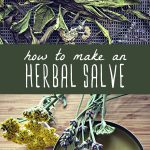
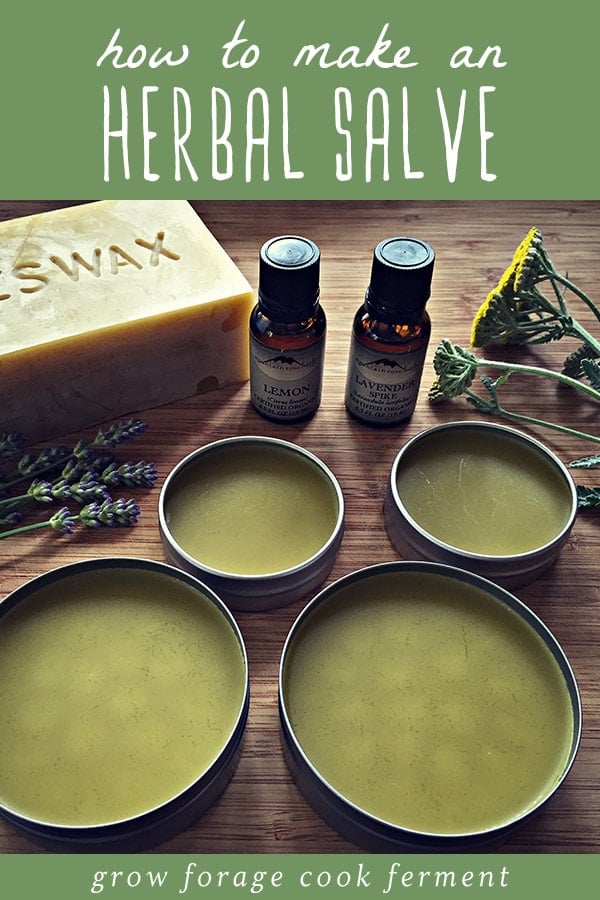
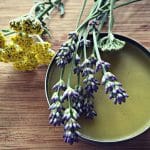

My three main herbal potions I make are, Plantain oil, chamomile honey and Elderberry syrup.
I am new to herbs and so far I’ve made a lavender salve and a calendula salve! I’m really enjoying it!!
I have made a couple of herbal tinctures and have been wanting to make some salves!
I love this, I would love to try making a salve or anything with beeswax, so far the most I’ve done is coconut oil with lavender and tea tree oil, great for diaper rashes and bug bites. :)
I make my own deodorant, hand soap, and a few other things. I LOVE MRH essential oils and products. It’s so nice to not have to worry about the latest pyramid scheme.
I’ve made some bath salt and sugar scrubs, deodorants, toothpaste, massage oils and lotions. Mostly just make them for personal use, but I do offer recipes to my friends that may be in need.
Fantastic post and a great giveaway!
Healing s a lves, bath products, scrubs, chapsticks, aromatherapy inhalers……most of ehat ee use is homemade. Always looking to add newformulations!
I was on the fence about making infused oils. This looks fairly easy. So, I think I am going to try it.
I love making salves & lip balms, my friends & family love them! Thx for the opportunity to be in this drawing! Peace, Pam
Love making my own stuff! Would love some goat milk ideas, too.
I haven’t used herbs very much, but would like to learn. I made a salve using beef tallow and essential oils. I use it on the calluses on my feet and it works great!
I made lotion bars
I have made many home remedies including healing salves.
I never tried making any kind of healing salves but I made homemade dry and liquid laundry soap. I would like to try. What other herbs would you recommend besides the herbs in this recipe.
I just made my first salve, no herbs, but that would be awesome too!
Yes, I’ve made herbal shampoos & conditioners from blonds, redheads & brunettes… Still working on one for silver :)
I have not made any healing salves, but I have made soap, laundry soap, lotions, creams and my own deodorant! I love making new things that are good for me and will be trying this salve recipe soon! Thank you!
I’ve never made salves, but would like to try it. Your instructions for making salves is so nice, and the photo’s amazing. Thank you for teaching us.
No, I’ve never tried to make my own natural healing products. It is on my list of skills to learn
Never tried to make my own salves but would like to try!
I’ve made calendula salve for friends with eczema. It worked really well!
I’ve just started making herbal salves & balms, so much fun!
I make my own tinctures and oils. Making some salves is on my list of herbal things to do!
I’ve never tried making salves before but I’m gonna give it a try this summer!
I’ve been making a wound salve for several years now. My family lets me know when we are getting low so the never run out, lol. Herbs are awesome!
I’ve never made my own salve before,but after reading your post,I’m might give it a go.Great job on the directions…cheers.
I love using herbs, this would be a lovely thing to win!
Very neat! I’m adding this to my list of skills to learn!
I have made soap, lip balm, and body wash.